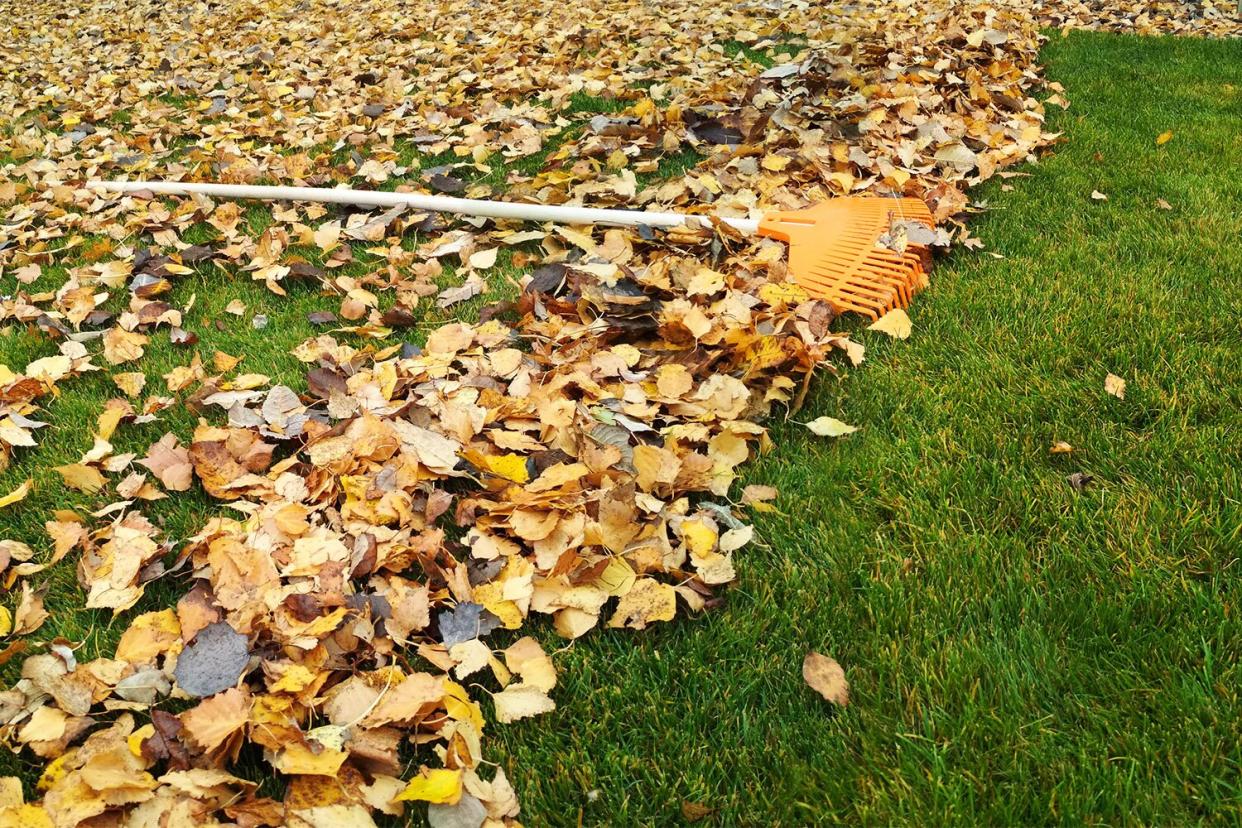Is Raking Your Leaves Bad for Your Lawn? A Grass Expert Explains

Alamy
To rake or not to rake — that is an essential question for homeowners when it comes to fall lawn care.
Although fallen leaves contain nutrients that are beneficial for your lawn, they can also be harmful in certain cases, says Suzanne DeJohn, garden editor at kidsgardening.org.
A few fallen leaves is fine, but they can quickly accumulate into a thick layer and end up smothering the grass. "You have a few options to avoid this," says DeJohn. "You can mow over them using the grass catcher on your mower and then add them to your compost pile, or you can rake them into a pile and allow them to decompose more slowly."
Once the leaves have decomposed, she advises spreading the compost over your lawn as free fertilizer. Both lawn clippings and fallen leaves offer nutrients that can build healthy soil, which DeJohn notes is the ultimate key to a flourishing lawn. Healthy soil will ensure a lush lawn that can crowd out most weeds.
RELATED: 9 Things Only Fall Fanatics Would Understand
Mowing in the fall is also a touchy subject, she says. DeJohn advises it's best to keep cutting your grass as long as it continues to grow. "Mow less frequently as growth slows, and keep blades sharp to ensure clean cuts that minimize disease problems," she says.
RELATED: Christie Brinkley Shares Secrets to Her Gorgeous Hamptons Garden — and Admits One Major Mistake
Many people apply lime to their lawn come autumn, but that's not necessarily right for everyone. It's essential to test your soil's pH levels with a simple kit you can pick up at the hardware store, especially before fertilizing, says DeJohn.
"Your soil may contain plenty of nutrients, but if the pH is too low (too acidic) or too high (too alkaline) those nutrients may be unavailable to plants," she says. Testing the soil "will indicate whether a fall application of lime is needed to raise the pH," she explains.
Fertilizing your lawn in the fall is usually unnecessary, she adds, as "many lawns will thrive with just a spread of compost."
If your lawn does need a boost, "apply a slow-release fertilizer at the recommended rate. Avoid over-applying fertilizer — more isn't better, and excess nutrients can result in runoff that pollutes waterways," she warns.
RELATED: Joanna Gaines Says Gardening Brings Her Family Closer Together: 'It's a Sweet Way to Connect'
When it comes to watering your lawn during the fall season, it's better to do so infrequently so that deep roots, which can withstand dry spells, are able to grow. In dry conditions, watering once a week is usually enough to keep grass healthy.
And while a lush green carpet is the goal for many, DeJohn suggests one small tweak: "Allow a corner of your yard to go wild in order to give beneficial insects a place to rest and overwinter."

